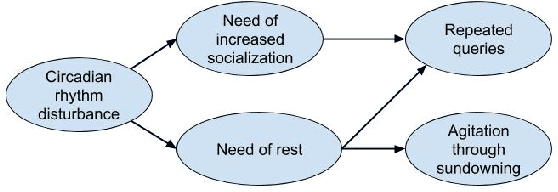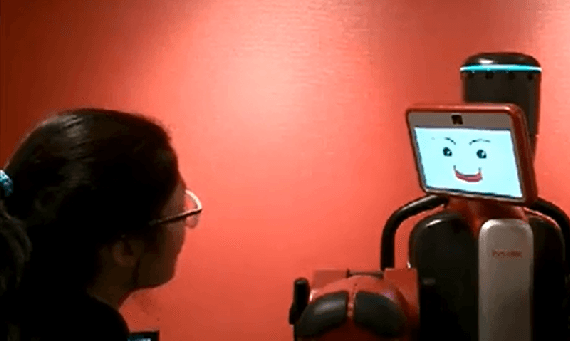Awais Ashfaq
Avoiding Improper Treatment of Persons with Dementia by Care Robots
May 08, 2020

Abstract:The phrase "most cruel and revolting crimes" has been used to describe some poor historical treatment of vulnerable impaired persons by precisely those who should have had the responsibility of protecting and helping them. We believe we might be poised to see history repeat itself, as increasingly human-like aware robots become capable of engaging in behavior which we would consider immoral in a human--either unknowingly or deliberately. In the current paper we focus in particular on exploring some potential dangers affecting persons with dementia (PWD), which could arise from insufficient software or external factors, and describe a proposed solution involving rich causal models and accountability measures: Specifically, the Consequences of Needs-driven Dementia-compromised Behaviour model (C-NDB) could be adapted to be used with conversation topic detection, causal networks and multi-criteria decision making, alongside reports, audits, and deterrents. Our aim is that the considerations raised could help inform the design of care robots intended to support well-being in PWD.
* 4 pages. Published. (Submitted: Jan. 22, 2019; Accepted: Jan. 30, 2019; Camera-ready submitted: Feb. 6, 2019.)
Machine learning in healthcare -- a system's perspective
Sep 14, 2019Abstract:A consequence of the fragmented and siloed healthcare landscape is that patient care (and data) is split along multitude of different facilities and computer systems and enabling interoperability between these systems is hard. The lack interoperability not only hinders continuity of care and burdens providers, but also hinders effective application of Machine Learning (ML) algorithms. Thus, most current ML algorithms, designed to understand patient care and facilitate clinical decision-support, are trained on limited datasets. This approach is analogous to the Newtonian paradigm of Reductionism in which a system is broken down into elementary components and a description of the whole is formed by understanding those components individually. A key limitation of the reductionist approach is that it ignores the component-component interactions and dynamics within the system which are often of prime significance in understanding the overall behaviour of complex adaptive systems (CAS). Healthcare is a CAS. Though the application of ML on health data have shown incremental improvements for clinical decision support, ML has a much a broader potential to restructure care delivery as a whole and maximize care value. However, this ML potential remains largely untapped: primarily due to functional limitations of Electronic Health Records (EHR) and the inability to see the healthcare system as a whole. This viewpoint (i) articulates the healthcare as a complex system which has a biological and an organizational perspective, (ii) motivates with examples, the need of a system's approach when addressing healthcare challenges via ML and, (iii) emphasizes to unleash EHR functionality - while duly respecting all ethical and legal concerns - to reap full benefits of ML.
A modified fuzzy C means algorithm for shading correction in craniofacial CBCT images
Jan 17, 2018



Abstract:CBCT images suffer from acute shading artifacts primarily due to scatter. Numerous image-domain correction algorithms have been proposed in the literature that use patient-specific planning CT images to estimate shading contributions in CBCT images. However, in the context of radiosurgery applications such as gamma knife, planning images are often acquired through MRI which impedes the use of polynomial fitting approaches for shading correction. We present a new shading correction approach that is independent of planning CT images. Our algorithm is based on the assumption that true CBCT images follow a uniform volumetric intensity distribution per material, and scatter perturbs this uniform texture by contributing cupping and shading artifacts in the image domain. The framework is a combination of fuzzy C-means coupled with a neighborhood regularization term and Otsu's method. Experimental results on artificially simulated craniofacial CBCT images are provided to demonstrate the effectiveness of our algorithm. Spatial non-uniformity is reduced from 16% to 7% in soft tissue and from 44% to 8% in bone regions. With shading-correction, thresholding based segmentation accuracy for bone pixels is improved from 85% to 91% when compared to thresholding without shading-correction. The proposed algorithm is thus practical and qualifies as a plug and play extension into any CBCT reconstruction software for shading correction.
* 15 pages, published in CMBEBIH 2017
 Add to Chrome
Add to Chrome Add to Firefox
Add to Firefox Add to Edge
Add to Edge